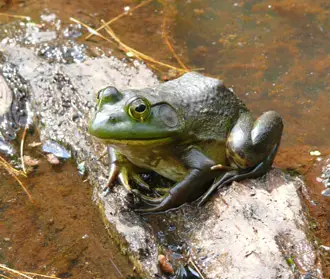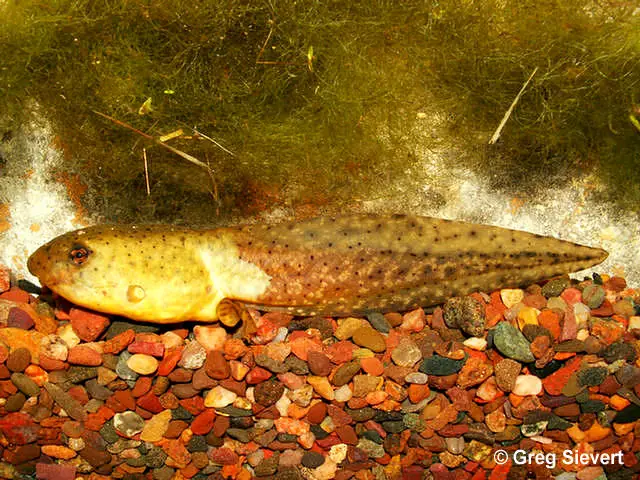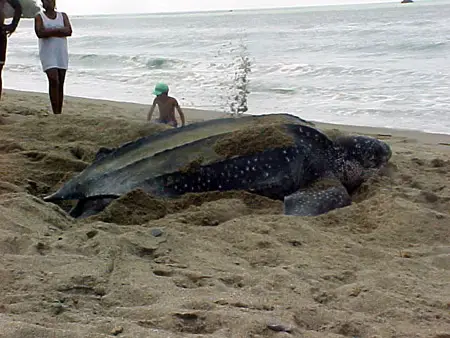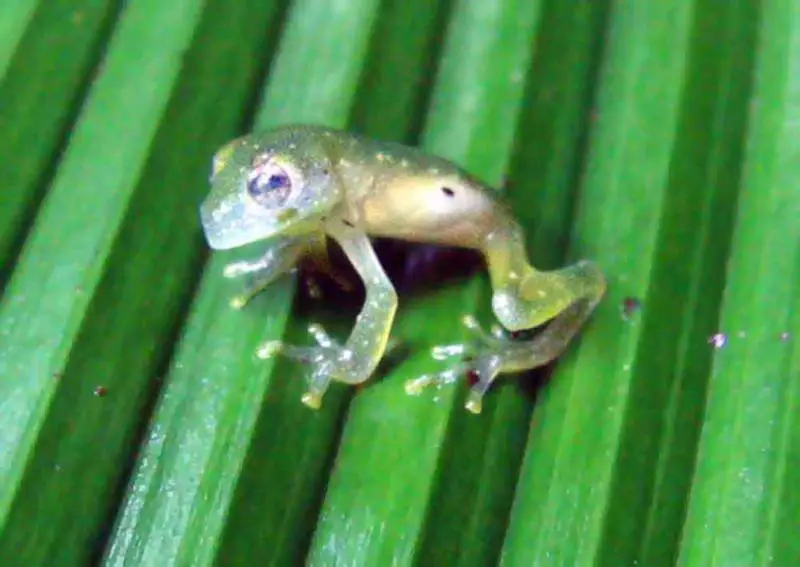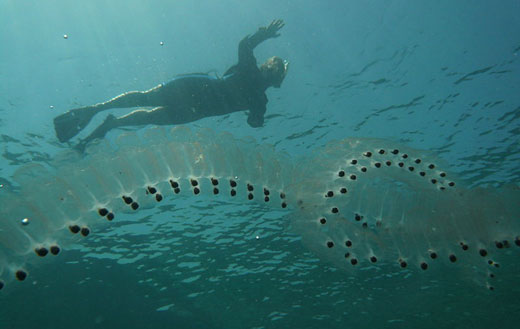Bullfrog
The Bullfrog has earned its name thanks to the powerful voice, that sounds more like a roar of a bull than the croaking of a frog. These frogs have extremely strong hind legs, making it able to jump incredible distances. It has even been observed that a Bullfrog caught and ate a low flying bat.
The frog often rests underwater, observing the surroundings for possible prey and also making it easier to avoid predators. Thanks to the greenish brown colouring, the Bullfrog blends in perfectly and they’re often almost impossible to see. As all frogs, they have excellent hearing, which allows them to track any movement nearby. On average, they are 10-17 cm long and weigh 500 – 600 grams.
Unlike other species, the Bullfrog prefers to eat the prey underwater. Its diet is diverse and they can prey on small fish, bugs, smaller frogs and even small mammals, birds or snakes. The frog relies on the element of surprise to catch prey, allowing it to move close and then swiftly jumping. Later, the frog takes the catch underwater and deliberately eats it. The relatively large size of this frog allows it to catch a variety of prey and they will most often hunt anything they can swallow.
During the mating period, the male starts emitting loud sounds which sound like roars, informing the female of its presence. The roars also warn other males that the territory is already taken. If it isn’t enough and a rival decides to enter the male’s territory, a fight follows, during which one of them is driven away.
When the female is ready to lay eggs, the male Bullfrog climbs on top of the female and fertilizes the eggs as they come out. Unlike most frogs, Bullfrog males take care of the caviar and guards it until tadpoles spawn. The hatchlings feed on water weeds and carrion, slowly developing until metamorphosis. In the cold Northern territories, where food is scarce, this can last for up to three years, and only then the tadpole begins metamorphosis. The total life expectancy of these frogs reaches 15 years in the wild and up to 8 years in captivity.
Initially, the Bullfrog only inhabited North America, but humans have helped this species spread and currently quite large populations can also be seen in the Caribbean Islands as well as northern Italy. The population of these frogs is increasing every year and the only danger for them is the destruction of natural habitat. Hopefully, we will not be seeing Bullfrogs disappear anytime soon.
